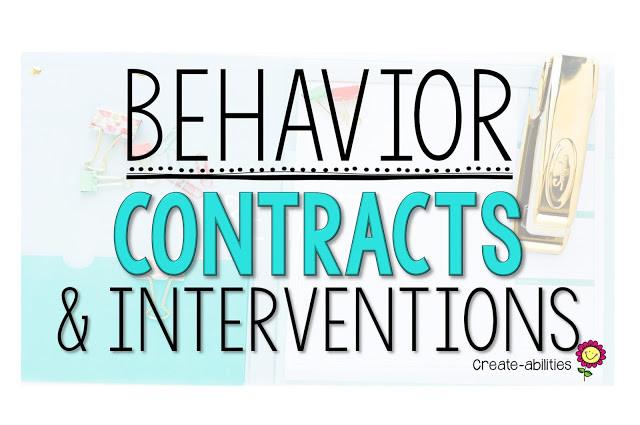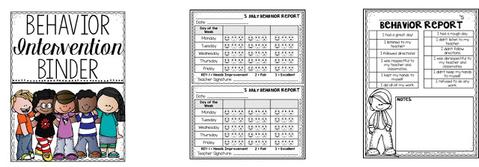
Behavior Contracts and Interventions
Behavior contracts are a useful intervention used by classrooms and schools to help monitor and change student behavior. They are also a way to celebrate positive behavior, major and minor accomplishments, and real change within a student.
WHAT IS A BEHAVIOR CONTRACT?
A behavior contract is a contract that is written by the teacher with input from the student. It outlines targeted behavior to fix or desired behavior to be promoted. The teacher and the student work together to discuss the goals that they are working toward. Working together with the student, the teacher can also identify rewards and incentives that will motivate the student to follow the contract. A parent should also be informed of the contract before it is implemented. They will need to agree to the terms and rewards before it can be successfully started.
WHEN IS A BEHAVIOR CONTRACT NEEDED?
A behavior contract is used when a student repeatedly breaks classroom rules or doesn’t respond to prompts and reminders to change their behavior. The student might also be identified as having social, emotional, or behavioral issues. When a student’s actions or refusals begin to interrupt their learning and the learning of others, a contract is usually appropriate. Contracts and observation forms can also be helpful in documenting student behaviors and interventions that have been tried.
STEPS TO IMPLEMENT A BEHAVIOR CONTRACT
There are several steps to follow when implementing a behavior contract.
1. Document the misbehavior over the course of days to weeks to show the need for a contract.
2. List the student behaviors that need to be changed. This could be behaviors that need to be reduced like shouting out or arguing, or behaviors to be increased like staying on task or turning in completed work. Make sure the behavior is something that can be easily tracked and modified. It becomes difficult to track behaviors like teasing at recess because of the space and number of students on the playground.
3. Pick a manageable number of behavior to focus on. In the lower grades, you might start with only 2-3 behaviors to modify. The upper grades can have a few more. If you pick too many behaviors to change, it can become overwhelming to the student who will feel defeated before even beginning the contract.
4. Write out the goals in a positive format. Instead of saying something like “Alex will stop shouting out during reading time.”, say something like “Alex will raise his hand to speak during reading.” or “Alex raised his hand before speaking during reading.” This will help you and the student to focus on the positive aspects of the behavior contract and help celebrate their accomplishments.
5. Explain clearly the point, number, or picture system that is being used to track progress. Help them know what happens if they get a certain number of points or all smiley faces for the day. Do they get to sit by a friend at lunch? Pick from the reward box? Get extra playtime at home? Whatever the reward, make sure that the student has choice in picking it and that they are well aware of what it takes to earn it.
6. Create areas for signatures. It is powerful to have the student write their name if appropriate. It is also important to have teacher and parent signatures so that both parties know what is happening with the contract.
7. Get permission from the parent before starting a contract. Having parental support will increase the chances of a behavior change. It will also help the student know that their teacher and their parents are working together as a team. Also make sure that the student agrees to work with the contract. If the student does not agree with the behaviors, the rewards, or using a contract at all, they will not comply and the contract will be useless. Make sure the rewards and incentives are enough motivation to ensure the student wants to comply with the contract.

BENEFITS OF USING A BEHAVIOR CONTRACT

Blog Categories
Meet the author





